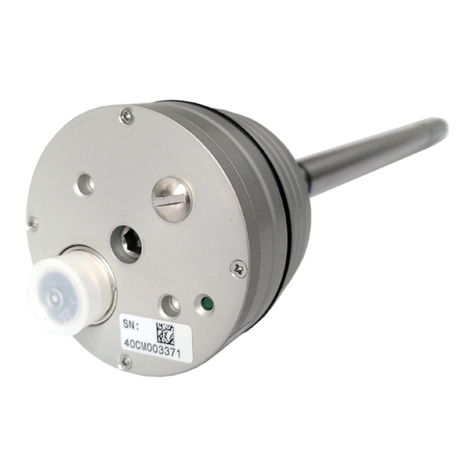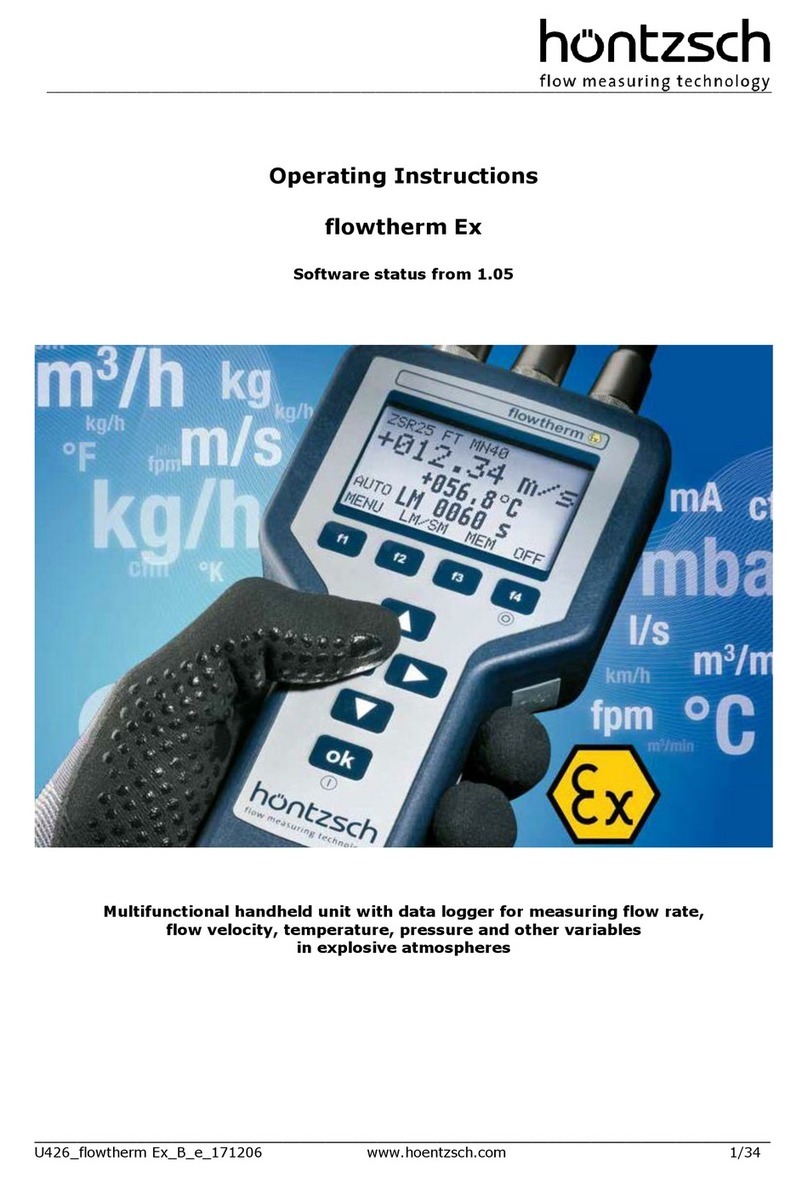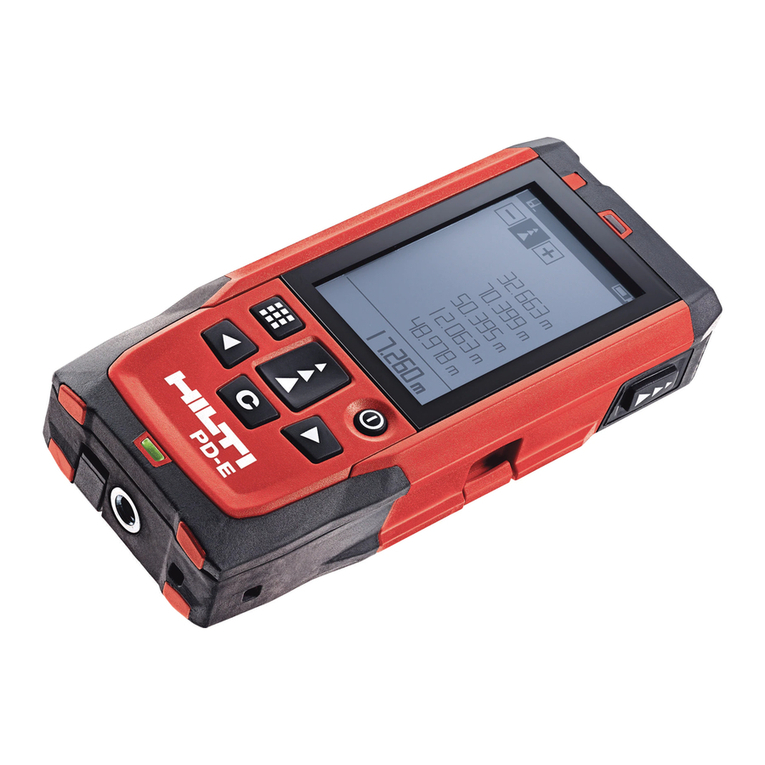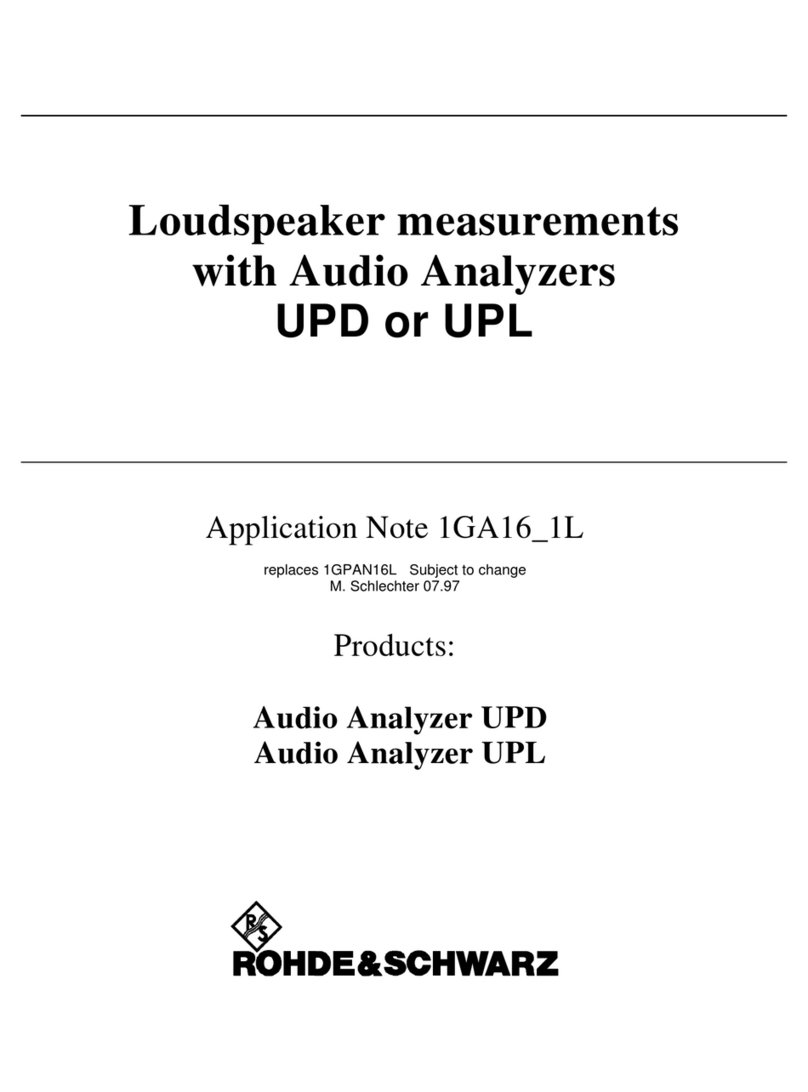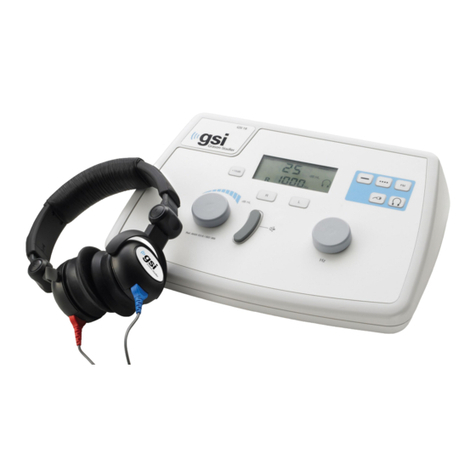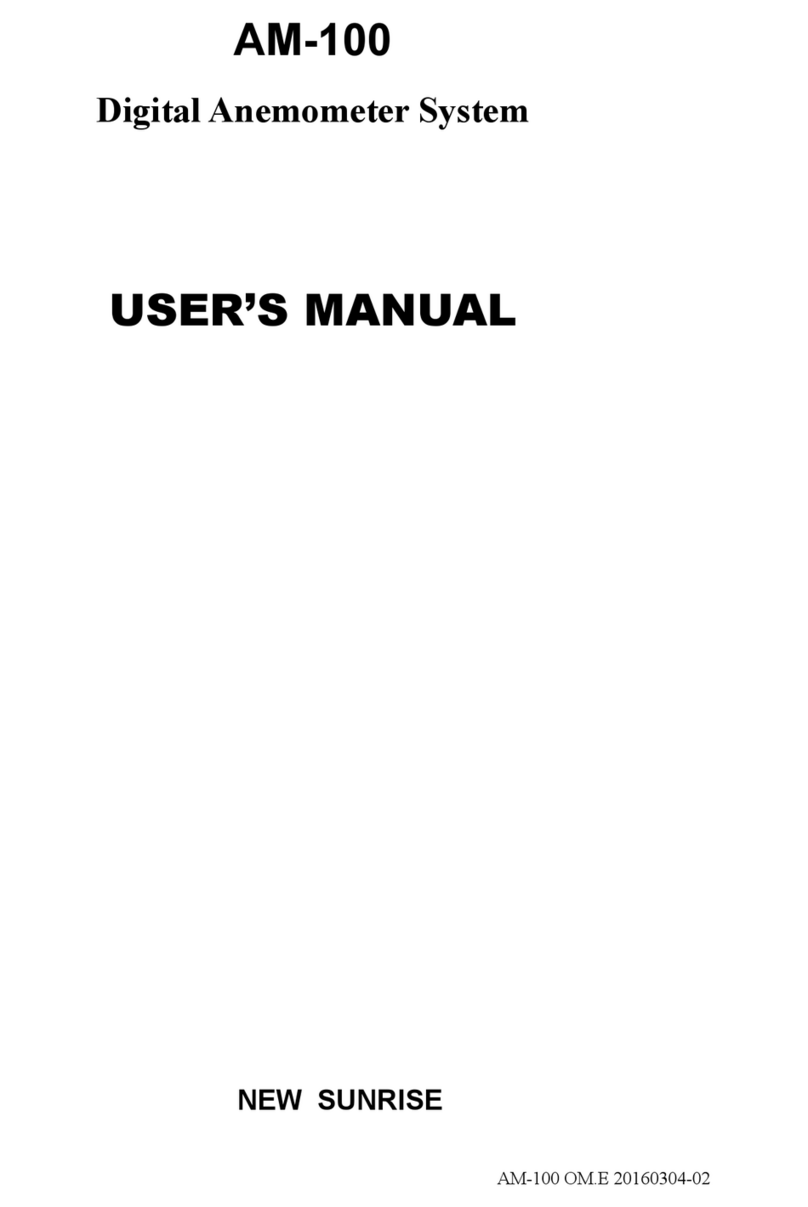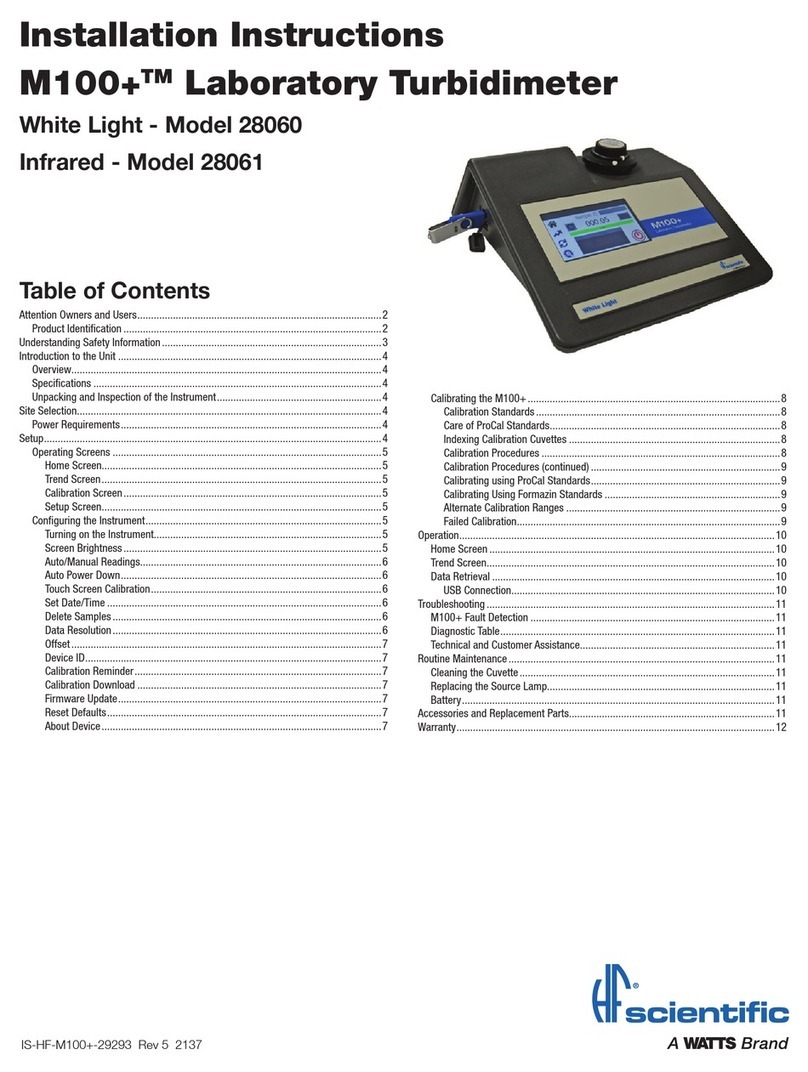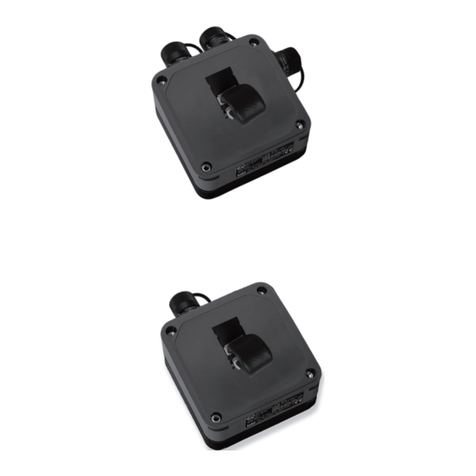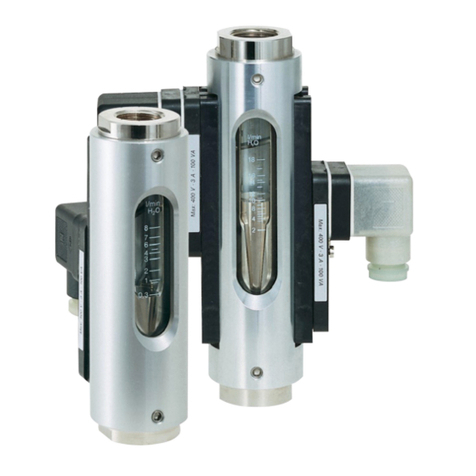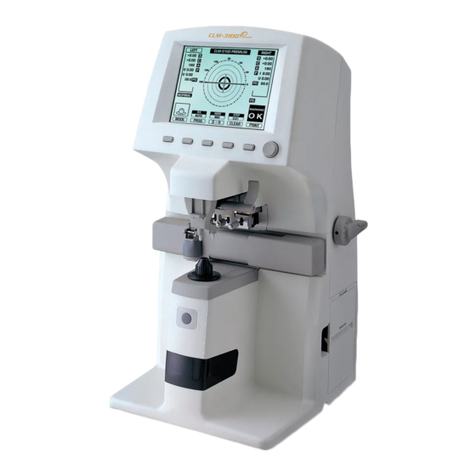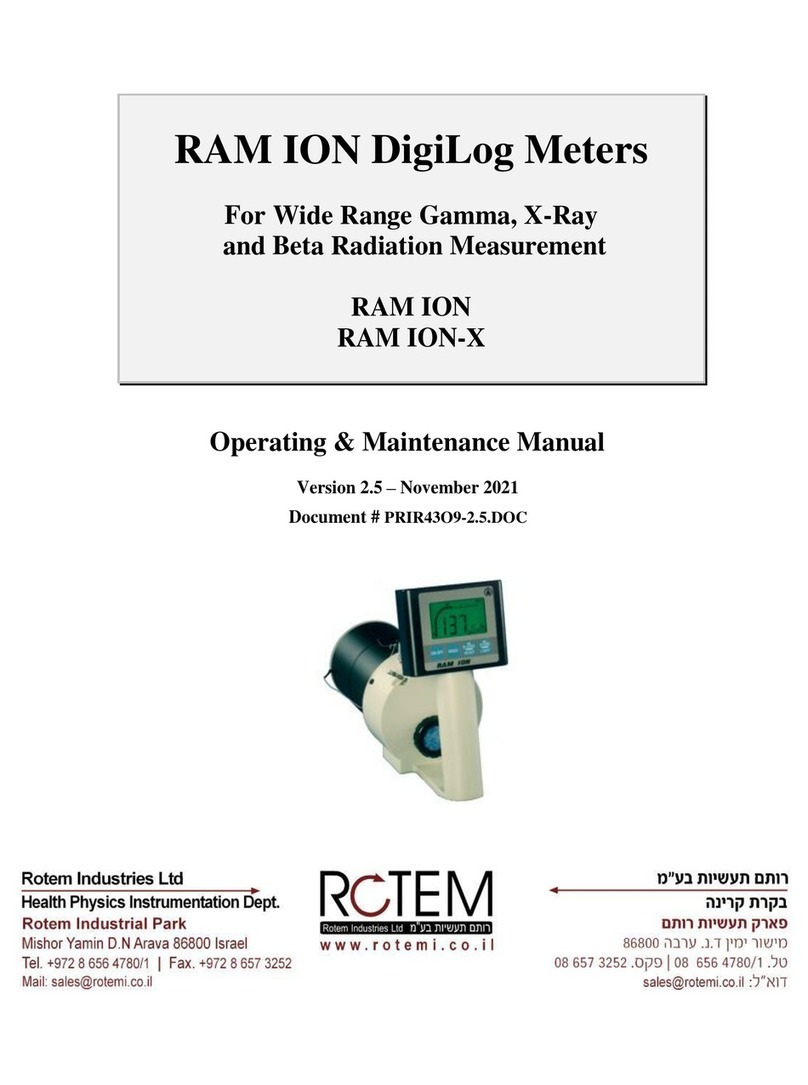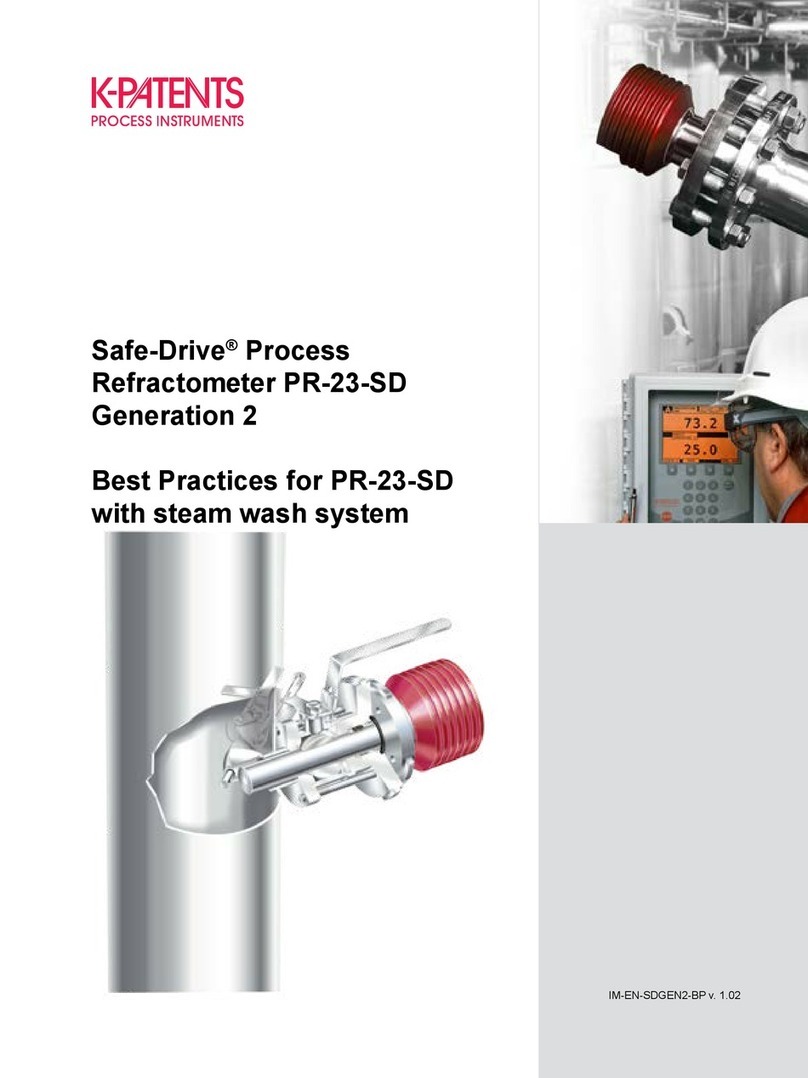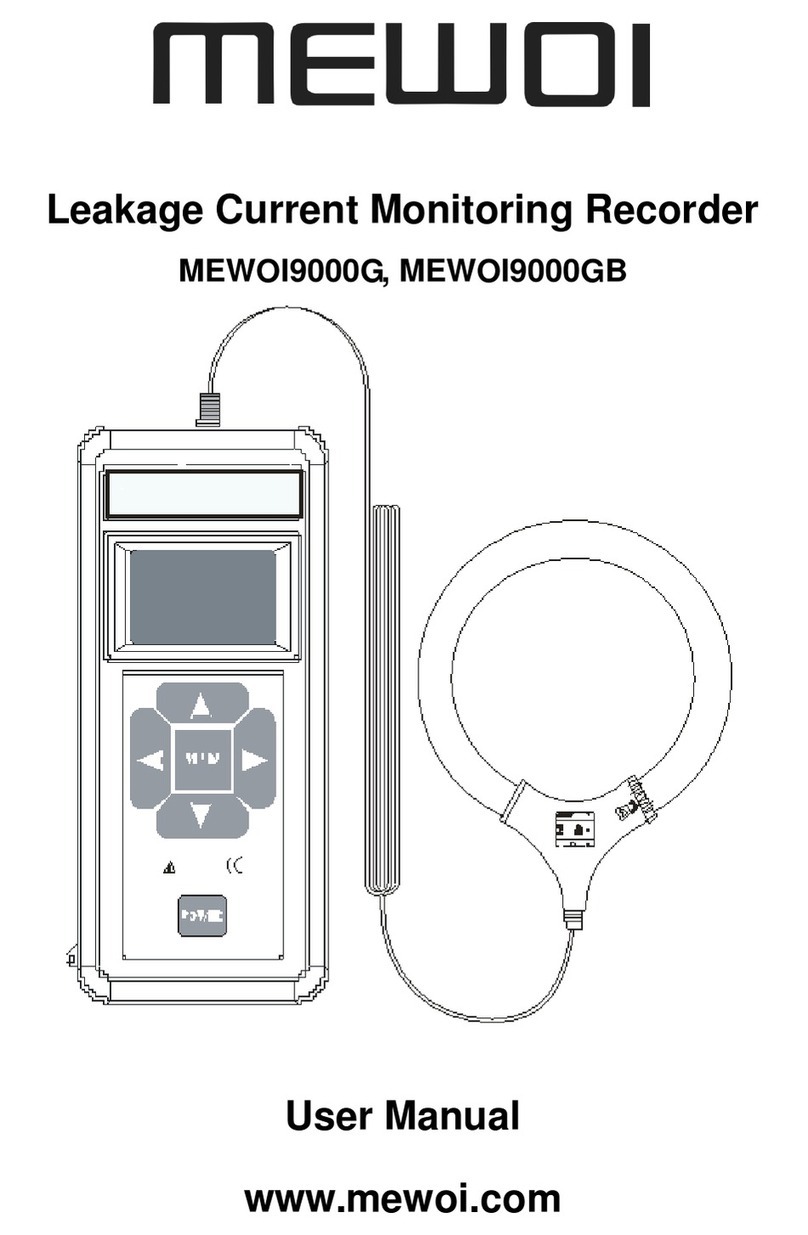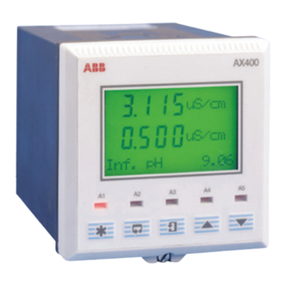Sensormate SML-WME User manual

INSTRUCTION MANUAL
SML-WME
無線傳感器
操作說明書

Instruction Manual forwireless Magnet Extensometer SML-WMEH
SENSORMATE Technology Inc.
6f., No.5, Ln.83, Sec.1, Guangfu Rd., Sanchong Dist., New Taipei City 241, Taiwan
TEL : +886 2 2999 5245 FAX : +886 2 2995 0782 2
1 Description
1.1
The Magnet-Strain Sensors Type SML-WME are latest generation wireless
extensometers with two integrated super magnets to measure the bending
compensated tie bar elongation and/or load (Load: if 2 sensors are used on one tie
bar).
The improved design does not only make the sensor shorter, but also increases the
absolute accuracy. Therefore all the sensors are used in pair.
This makes the measurement and check of the following parameters even easier:
Tie Bar Load Distribution
Clamping Force Measurement
Elongation and strain measurement on any flat surface (e.g. mould platen)
Advantages of this system:
Very high accuracy: <1% absolute (like bonded strain gages)
Safe against machine vibration and shock (like the strain rings)
One system for all tie bar diameters
Measures also reliable on flat surfaces
2 Sensors for bending compensated measurements
Quick & easy mounting
Digital Monitor with direct Force/Load/με display (kN / ton/με)
Comes in carrying case with 8 or 9 & 10 Sensors
Light and handy case

Instruction Manual forwireless Magnet Extensometer SML-WMEH
SENSORMATE Technology Inc.
6f., No.5, Ln.83, Sec.1, Guangfu Rd., Sanchong Dist., New Taipei City 241, Taiwan
TEL : +886 2 2999 5245 FAX : +886 2 2995 0782 3
1.2 Technology:
The Sensor SML-WME is based on pressed-on strain gauges . This successful
technology is used in many products for the molding industry.
The pressed on strain gage is placed under a stainless steel foil between the two
magnets. The strong magnets press the strain gage that strong onto the surface of
the tie bar that friction occurs between the strain gage, the foil and the tie bar. This
friction replaces the usually used strain gage adhesive – that means easier
application with the same results, but without bonding.
Finally this technology allows highly accurate tie bar elongation measurement with
fast and reliable mounting.
The sensors are basically magnet mounted and reusable strain gages which
measure strain on cylinders or flat surfaces.
2. TECHNICAL DATA
(FS = Full Scale = max. measuring range; Threshold= min. reaction of mechanical
unit, accuracy = combined error of linearity & hysteresis)
2.1 Sensor
-Measuring range με +/-800
-Accuracy %FS <1%
-Dimension (LxWxH)mm 88x46.5x50
-Temperature range ideal °C 10...30
-Temperature range compensated °C 10...60
-Bridge resistance @ 23° C Ω350
-Referencetemperature °C 23
-Measuring base (Strain gage-Type) mm 7.9 x 4.8
-Magnet force typ. N 2 x 240
-Frequency range Hz 2.4G
- Power supply VDC 2 x AA NiMH rechargeable

Instruction Manual forwireless Magnet Extensometer SML-WMEH
SENSORMATE Technology Inc.
6f., No.5, Ln.83, Sec.1, Guangfu Rd., Sanchong Dist., New Taipei City 241, Taiwan
TEL : +886 2 2999 5245 FAX : +886 2 2995 0782 4
2. Instructions
SML-WME sensor with battery housing outline Batteries in housing
IMPORTANT:
This sensors are sensitive measuring instruments with a resolution of
0.001mm .Handle this instruments with the respective care.. These instructions shall
be read carefully by any user prior to application.
Mounting of the magnet sensors
2.1 Preparation:
.
1. Zigbee 2. Adjust Nut調節螺母 3. Battery box電池盒
Clean the mounting spot from oil,
loose parts, paint and other parts
on the surface
The area where the foil is being placed
must be smooth that the foil will not be damaged.
All sensors have to match used.
ex. 1A+1B, 2A+2B, 3A+3B, 4A+4B
2.2 Installation:
Set the sensor carefully onto the tie bar at a location where another sensor can be
set 180º opposite. (Important: position should be at least 1 times diameter away from
the fixed platen = homogeneous strain distribution is guaranteed for comparable
results).
2.3 The magnets hold the sensor already on the surface.
This allows easy shifting until the sensor can be installed at the desired location.
2.4 CHECK:
The sensor shall not move if you try to shake it slightly.
The machined edges of the magnet need to be in contact with the tie bar on the
whole length.
2.5 Now it is time to mount the second sensor opposite on the tie bar
(see picture A.)The sensors can be mounted in any angle – but in any case opposite.
2
1
3

Instruction Manual forwireless Magnet Extensometer SML-WMEH
SENSORMATE Technology Inc.
6f., No.5, Ln.83, Sec.1, Guangfu Rd., Sanchong Dist., New Taipei City 241, Taiwan
TEL : +886 2 2999 5245 FAX : +886 2 2995 0782 5
Remark: Only when two sensors are >8° off the correct opposite position,
then we get an error >1% of the measuring value!
*圖A picture A
3. Measuring of load distribution
(= load on each single tie bar)
Procedure:
3.1 Place sensors 1A+1B, 2A+2B, 3A+3B, 4A+4B on each tie bar,
all of the sensors , "A" and "B" should be define on upper side or lower side of tie bar.
3.2 Switch on all sensor "A" only, start running machine, the tablet each window will
display strain value, this is tie bar bending direction strain value.
3.3 Switch off "A" and switch on "B", the same as above procedure, the monitor
display value is tie bar the bending direction strain value.
3.4 Open and close the machine 2...4 times and press ‘RESET’ between each cycle.
The effective, precise measurement can take place as soon as ca. 1...3 digits Offset
remain. The magnet sensors have now settled and are ready.
3.5 The displayed values are bending compensated, because the measuring
values of the two opposite sensors are averaged at the input. The displayed
microstrain (με) values are the tie bar elongation. Example: Display 355 = 0.355mm
tie bar elongation per meter of tie bar
With this value, the clamping force can be calculated.
The new WMEH digital Monitor calculates by push-button directly kN or tons.
The elongation shown is a superposition of load and bending. Very high differences
of both values (e.g. <250με versus >700με) can be an indication that the tie bar has
started cracking.
Theoretical display on how to measure the tie bar bending: One Sensor has no load.
Make sure that this open sensor is not exposed to temperature variations.

Instruction Manual forwireless Magnet Extensometer SML-WMEH
SENSORMATE Technology Inc.
6f., No.5, Ln.83, Sec.1, Guangfu Rd., Sanchong Dist., New Taipei City 241, Taiwan
TEL : +886 2 2999 5245 FAX : +886 2 2995 0782 6
4. General hints:
Do not close the machine with highest speed, as this may cause offset because
of the strong vibration.
Compatibility: the WMEH is fully compatible (=generate the same signal) as
bonded .
5. Calibration intervals:
This measuring instrument should be calibrated every 12 months. The sensors,
monitors and cables should then be sent to the manufacturer.
If the foil is damaged, or the 350 Ohm cannot be measured anymore, then the
sensor has to be sent back for repair or overhaul and calibration.
RECOMMENDATION: If the sensors are used heavily, then we recommend to
purchase 1 or two sensors more then actually necessary. This assures that the
system can still be used even if one sensor is out of order or currently at the factory
for calibration.
Thank you very much that you have chosen our products and services.
We are improving our products continuously.
If you have any hints for further improvements of our products, please contact us.
FCC
Federal Communications Commission (FCC) Statement
15.19
This device complies with Part 15 of the FCC Rules.
Operation is subject to the following two conditions:
1) this device may not cause harmful interference and
2) this device must accept any interference received, including interference that may cause undesired
operation of the device.
15.21
You are cautioned that changes or modifications not expressly approved by the part responsible
for compliance could void the user’s authority to operate the equipment.
15.105(b)
This equipment has been tested and found to comply with the limits for a Class B digital device,

Instruction Manual forwireless Magnet Extensometer SML-WMEH
SENSORMATE Technology Inc.
6f., No.5, Ln.83, Sec.1, Guangfu Rd., Sanchong Dist., New Taipei City 241, Taiwan
TEL : +886 2 2999 5245 FAX : +886 2 2995 0782 7
pursuant to part 15 of the FCC rules. These limits are designed to provide reasonable protection
against harmful interference in a residential installation. This equipment generates, uses and can
radiate radio frequency energy and, if not installed and used in accordance with the instructions,
may cause harmful interference to radio communications. However, there is no guarantee that
interference will not occur in a particular installation. If this equipment does cause harmful
interference to radio or television reception, which can be determined by turning the equipment
off and on, the user is encouraged to try to correct the interference by one or more of the
following measures:
-Reorient or relocate the receiving antenna.
-Increase the separation between the equipment and receiver.
-Connect the equipment into an outlet on a circuit different from that to which the receiver is
connected.
-Consult the dealer or an experienced radio/TV technician for help
FCC RF Radiation Exposure Statement:
1. This Transmitter must not be co-located or operating in conjunction with any
other antenna or transmitter.
2. This equipment complies with RF radiation exposure limits set forth for an
uncontrolled environment. This equipment should be installed and operated with
a minimum distance of 20 cm between the radiator and your body.
Table of contents
Other Sensormate Measuring Instrument manuals
